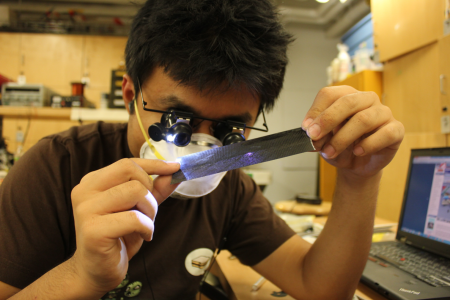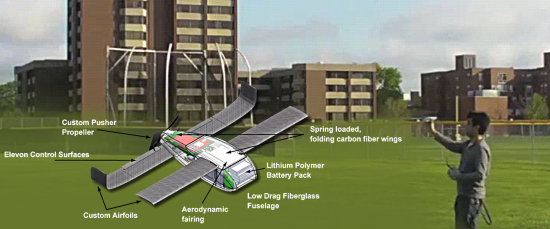January 11, 2017 – In Michael Crichton‘s science fiction novel, Prey, which he published in 2002, he describes a self-organizing swarm of nano-sized artificial intelligent (AI) robots capable of making decisions on the go, adapting to changing environmental circumstances and hazardous threats. Confined to a laboratory setting, the nanobots could be managed, that is, until they escape. Not only self-organizing, these AI microscopic robots once in the wild begin to feed, replicate and learn. By the end of the novel the plot points to an unintended consequence of intelligent swarm technology, that it would become an existential threat to human existence and life on the planet.
Well life is starting to imitate art based on a January 9, 2017 press release from the United States Department of Defense (DoD). Entitled “Department of Defense Announces Successful Micro-Drone Demonstration,” it describes what it calls “one of the most significant tests of autonomous systems under development.” A test conducted in October 2016 released 103 Perdix drones from three FA-18 Super Hornets. The Perdix drones demonstrated collective swarm decision-making, “adaptive formation flying” and “self-healing.”
William Roper, Director of the Department of Defense, Strategic Capabilities Office, describes the purpose of the test, “Due to the complex nature of combat, Perdix are not pre-programmed synchronized individuals, they are a collective organism, sharing one distributed brain for decision-making and adapting to each other like swarms in nature.”
Perdix drones were initially created by engineering students working in the Beaver Works, Lincoln Laboratory at Massachusetts Institute of Technology. The Beaver Works has its core mission to “foster innovative, impactful research.” The laboratory works on human-machine interfaces, systems-on-a-chip, remote sensing, bioengineering, robotics, cybersecurity, computer vision technology and humanitarian initiatives. Perdix was designed to be a balloon-launched swarm of UAVs (unmanned aerial vehicles) to support environmental monitoring. Well it seems not anymore. With DoD funding behind the laboratory the technology has been miniaturized, and now a military application, which six generations later, has demonstrated its adaptive swarm behavior skills.
What are the military applications for Perdix? Nearly invisible the technology can do intelligence gathering, surveillance and even become a means of inflicting damage on an enemy through invasive penetration of a weapon system. Is the end result or just the beginning of something far more sinister?

















